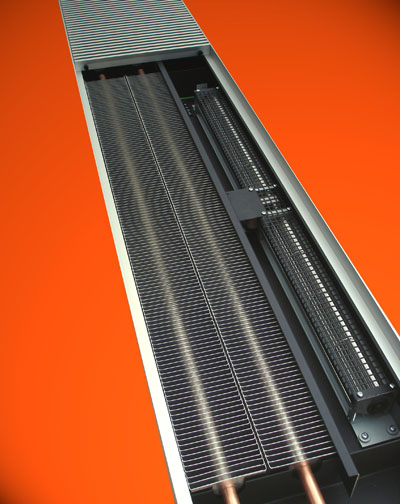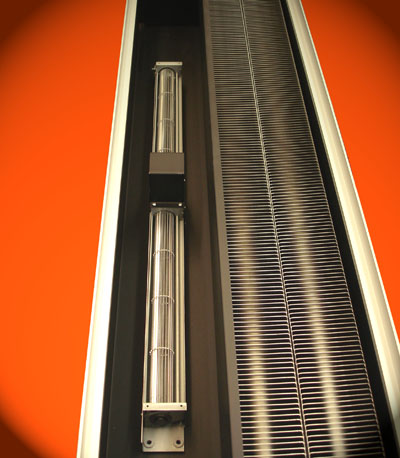
FAN ASSISTED TRENCH |
 |
Our fan assisted trench heaters have been designed to provide the higher heat
outputs not normally achievable by natural convection heaters for a given size
and configuration. As a rule of thumb, outputs can be doubled by use of fan
assistance.
The use of crossflow fans
within the trench casing provide a fast, smooth laminar flow of air through
the linear or roll-up grille, without turbulence or intrusive fan motor noise.
The advantage of crossflow fans are their small size coupled with high relative
efficiency, especially for small pressure and placement. They have a long ‘throw’
of air for direct ventilation, with widely controllable characteristics and
extremely low noise. Fan assistance can be applied to any of the trench heater
casings featured on this site having overall dimensions of at least 150mm wide
and 125mm deep.
Fan speed control is provided by an electronic speed controller switch, usually
wall-mounted nearby.
A typical installation would only need the fan to operate at the lower speed
setting.
 |
The fans are chassis mounted, constructed in zinc coated steel and mount-insulated
by rubber type absorption feet. A centrally mounted motor is flanked by two
300mm long aluminium impellers of 30mm diameter. Each trench casing typically
would have one of these units fitted.
Motors are of the ‘shaded pole’ type, conforming to BS5000 PT II. Having two field windings, these motors have power consumption of 8.7 Watts and 15.5 Watts respectively. They have a ‘Free air speed’ of approx. 1,900 r.p.m. and 2,300 r.p.m. with corresponding ‘Free air flow’ of approx. 32 L/sec and 39 L/sec. Typical applications within trench heater casings at medium settings, would yield ‘Free air flow’ of approx. 16 L/sec.
Sound pressure levels are
remarkably low under normal operating
conditions. Acoustic properties of individual rooms can have an influence
on actual noise levels recorded.
E & O E